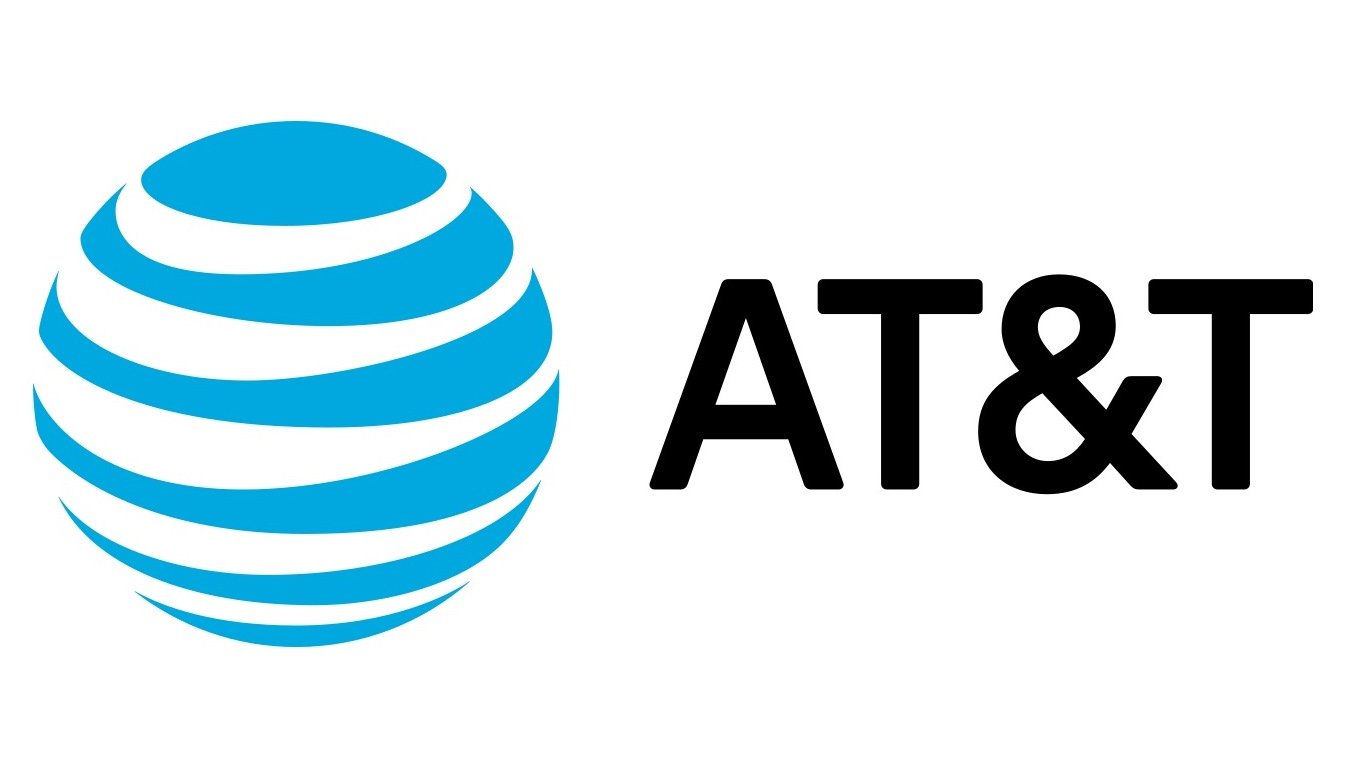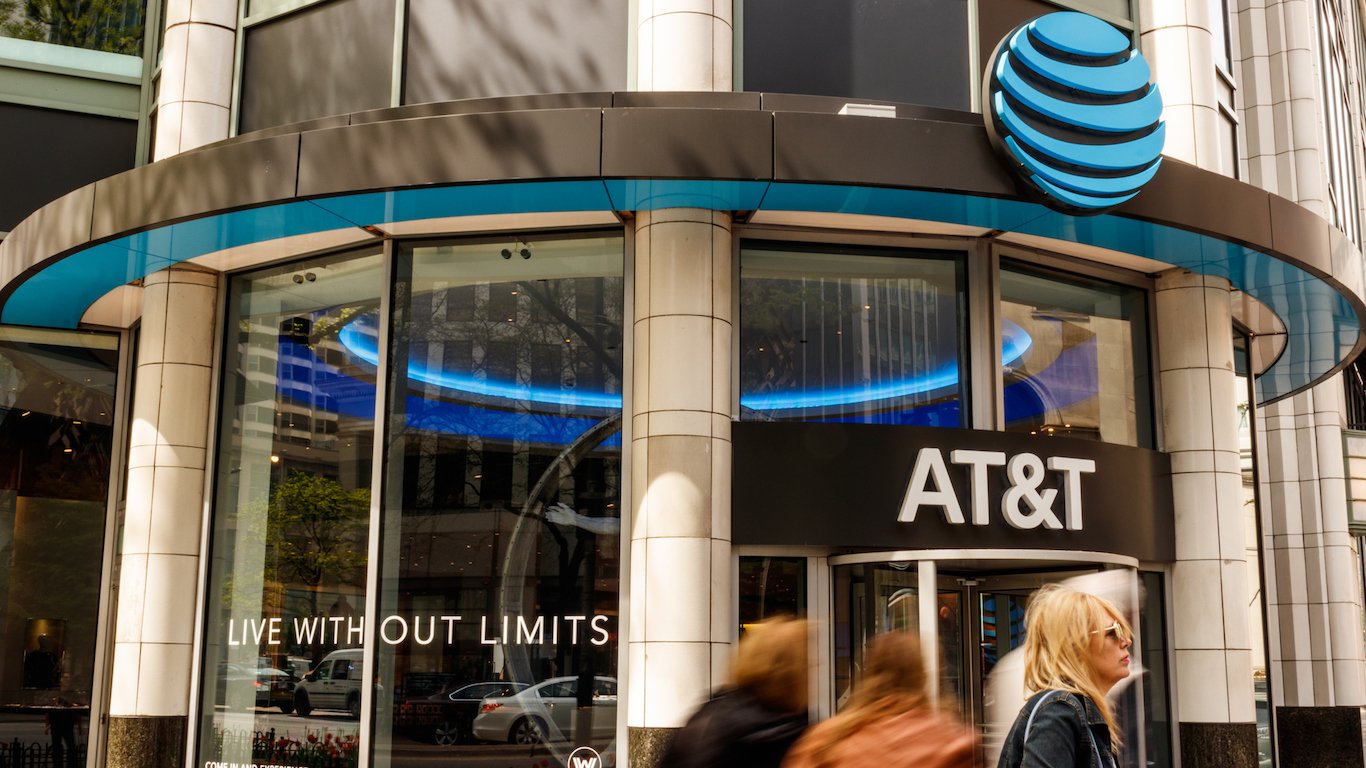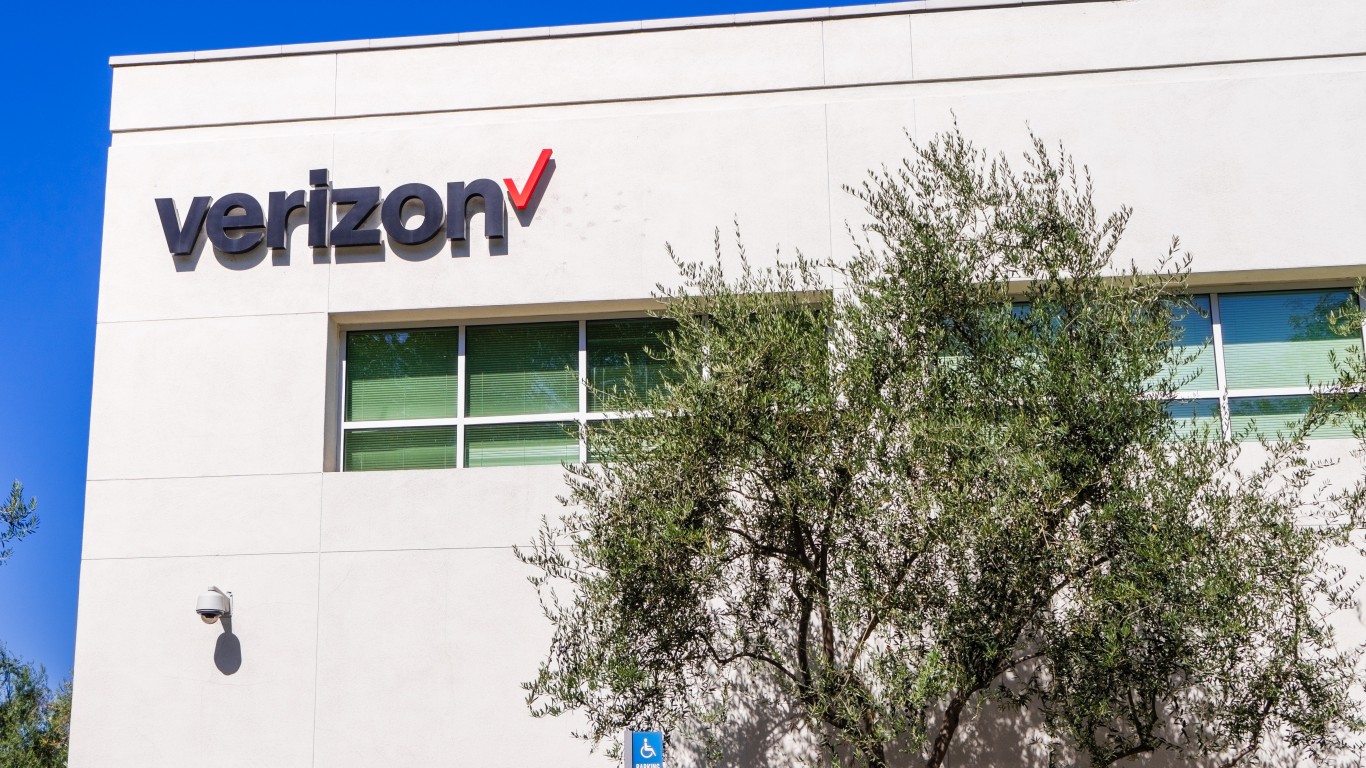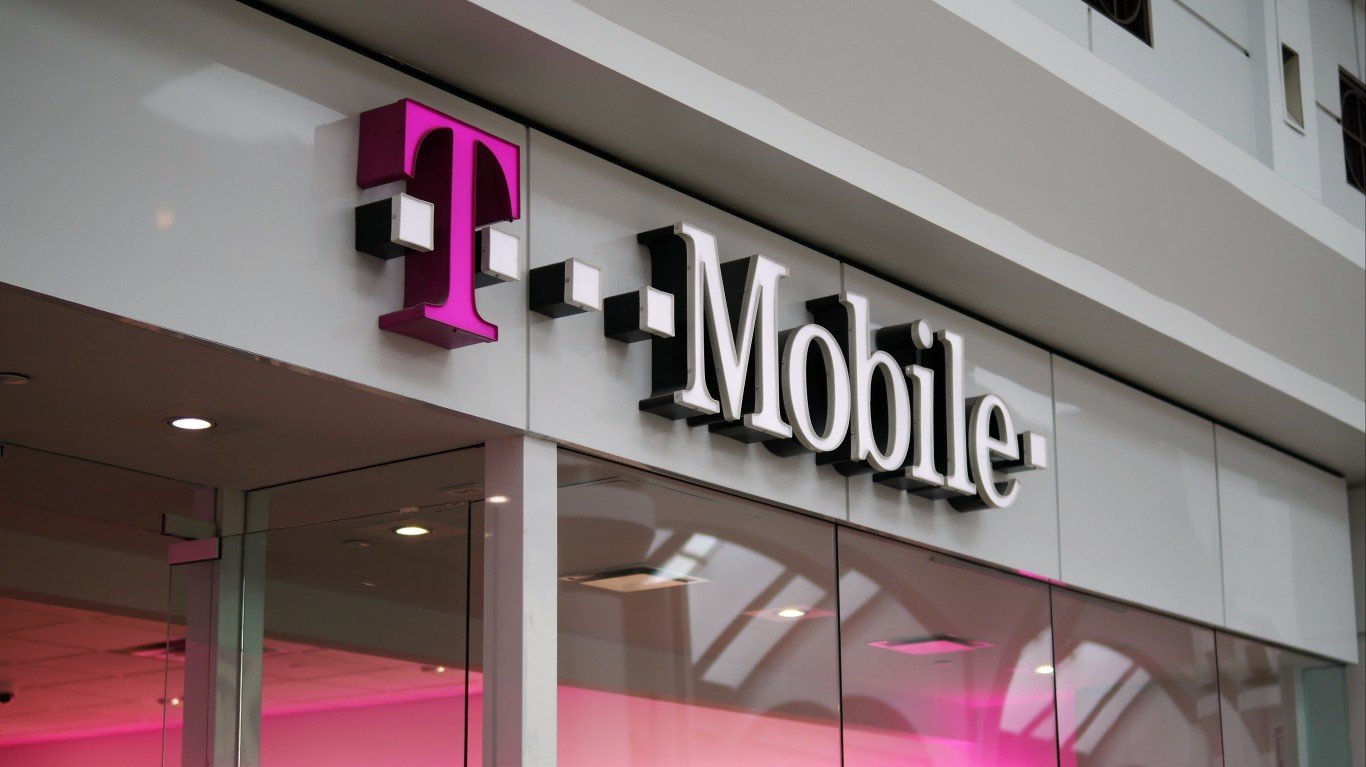

AT&T’s 5G product is not really 5G at all. The huge telecommunications and media company suffered that blow last week. The National Advertising Review Board (NARB) recommended that it drop a number of claims about the new ultrafast broadband service.
Specifically, the NARB insisted that AT&T kill its “5G Evolution”, “5G Evolution” and “The First Step to 5G” branding. Nationwide, this service has started to replace 4G.
5G Is Key to AT&T’s Future
While the performance of its media assets and traditional telecom products are critical to AT&T’s future, nothing tops the need for a successful launch of 5G. AT&T (NYSE: T) has three separate businesses and it needs all of them to do well to pay down huge debt from M&A. 5G is the future of the wireless industry. That is true in the U.S. and around the world.
The race for 5G dominance in America has three horses. AT&T is one, with 166 million subscribers. Verizon Communications Inc. (NYSE: VZ) has 151 million. And the newly merged Sprint/T-Mobile (NASDAQ: TMUS) has just over 100 million.
In late April, AT&T nearly doubled the availability of its low-band 5G network with a rollout to 90 new areas, including big markets like Chicago, Seattle, Tampa and New Orleans
Each of the big three has operated on the current 4G platform since 2009. This means none of the companies had a large advantage over the others.
The number of wireless subscribers in the U.S. is currently larger than the total population. That means this number will not rise. The battle, therefore, is for market share.
Each of the three wireless companies has the same products and services, which means there is little differentiation. Each sells the latest Apple Inc. (NASDAQ: AAPL) iPhone. Each also has the latest Samsung smartphone, which is nearly as popular as the iPhone. Each offers prepaid and unlocked phones.
Discounts are another critical competitive advantage. However, discount plans are complex. Each has unlimited plans for talk, text, and entertainment streaming service.
But these also come with tiers of services, which can be as low as $35 a month and as high as $55. And some of these plans charge extra for high definition streaming and storage.
The wireless subscription plans become even more complex when they include multiple people. Discounts include plans with two to six lines.
The Best 5G Carrier Will Be the Winner
Even though AT&T was slapped for its advertising claims about 5G, each of the three major carriers claims it is rolling out 5G networks, but it’s a slow process. Consumers are left to dig for where these will be installed. Keep in mind that 5G-enabled phones are expensive. They’re particularly expensive if the new feature can’t be used.
One of the most telling pieces of news about how fast 5G will be rolled out is that Apple does not have a 5G-enabled phone yet. The iPhone 12, expected later this year, should be Apple’s first phone to be compatible with 5G.
T-Mobile says it has America’s largest 5G network. “Our nationwide 5G network covers more people and places than anyone else,” the company claims. It is difficult to prove if that claim is accurate.
Verizon’s marketing pitch is that “Not all 5G is the same.” The company says its 5G network is 10 times faster than other 5G networks. In small print, it adds its 5G is only available in parts of some cities.
AT&T claims it is “Building 5G on America’s Best Network.” A look at the 5G maps on its website indicates that coverage is spotty.
What Is Up for Grabs With 5G
A Deutsche Bank analysis says that it will cost $10 billion to build a national 5G network. That means among the three carriers, the total cost will be $30 billion. Although there is no way to exactly estimate how much additional market share individual carriers will need to recoup this, each has to assume it will at least pick up some customers from its rivals.
What T-Mobile, AT&T and Verizon Wireless face is a once-in-a-decade chance to improve their wireless financial performance. The next standard, presumably 6G, is years away.
If each carrier has 5G networks that offer about the same speed, the differentiation will be which gets to market first with a truly national network. Today, it is not clear if any of the three has a meaningful lead.
The battle over truly nationwide 5G dominance has two aspects that the carriers can control–somewhat. The first is that each carrier needs to decide which cities it will wire first, but there is also the chance that a price war will push down margins. Then, each has to wire suburbs. Finally, rural areas will be added.
Meanwhile, each has to develop its price strategy. The carriers hope they can charge premiums.
What the carriers cannot control is when the major smartphone markers come to market with 5G phones. Until Apple and Samsung move aggressively into the market, 5G use will be limited.
Consumers will also need to be convinced that the upgrade to a 5G-enabled device and a new 5G data plan will be worth the expense. The carriers will need to educate shoppers on what 5G offers. But this depends on the development of new apps that take advantage of the 5G technology.
The enhanced speed makes virtual reality and augmented reality applications possible. It’s a whole new toolkit for companies marketing and selling their products.
Analysts say 4G paved the way for heavily used apps such as Snap and Uber. The industry needs some breakout new apps to show consumers just what 5G can do, and how it can change their lives.
Meanwhile, the Streaming Battle
While the wireless companies battle for dominance in the communications segment, they’re also waging a long-term war over streaming entertainment. More people are consuming entertainment on portable devices, and the rollout of 5G only makes that easier.
Streaming services have been highly vaunted by Wall Street over the past few years, and AT&T’s service is eagerly anticipated as well. AT&T plans to roll out HBO Max this week. It’s a crowded, competitive space, including Disney (NYSE: DIS), Netflix (NASDAQ: NFLX), Amazon (NASDAQ: AMZN), Alphabet (NASDAQ: GOOGL) and Apple.
AT&T got into entertainment via its $85 billion merger with Time Warner Inc., comprising Warner Bros., HBO and Turner, in the summer of 2018. The combined assets represent an impressive library of films and TV shows.
AT&T’s cable TV subscribers will get the service free if they already subscribe to HBO. Subscribers to some other services will also get the new service for free. Otherwise, HBO Max will cost $15 a month ($12 if customers sign up before the May 27 launch date).
The move into entertainment and TV services hasn’t been all rosy for AT&T. The company’s long-time CEO Randall Stephenson is leaving July 1. Critics disliked some of his acquisitions, including DirecTV. In the last few years, AT&T has lost several million satellite and wired pay-TV subscribers.
Some think the Time Warner deal was too costly. Thanks to all the costly acquisitions, AT&T is currently saddled with about $200 billion in debt. Only time will tell if the entertainment moves will pay off.
Sponsored: Find a Qualified Financial Advisor
Finding a qualified financial advisor doesn’t have to be hard. SmartAsset’s free tool matches you with up to 3 fiduciary financial advisors in your area in 5 minutes. Each advisor has been vetted by SmartAsset and is held to a fiduciary standard to act in your best interests. If you’re ready to be matched with local advisors that can help you achieve your financial goals, get started now.
Thank you for reading! Have some feedback for us?
Contact the 24/7 Wall St. editorial team.
 24/7 Wall St.
24/7 Wall St.


